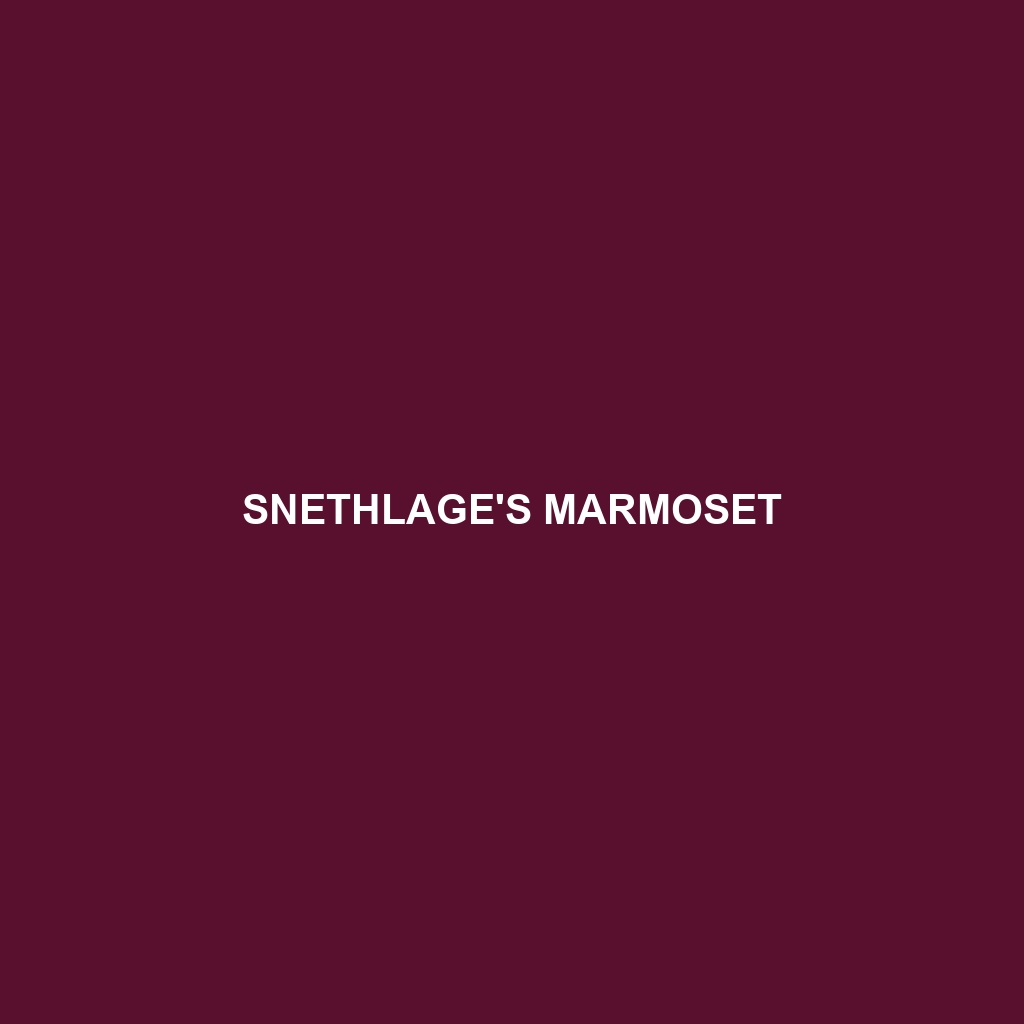Snethlage’s Marmoset: A Detailed Profile
Snethlage’s Marmoset (Mico snethlageae) is a small primate species that thrives in the tropical rainforests of the Amazon Basin in Brazil. Noted for their endearing appearance and social nature, these marmosets are an integral part of the rich biodiversity of their habitat. They play a critical role in their ecosystem, particularly through their feeding habits that aid in seed dispersal.
Physical Characteristics
Size: Snethlage’s Marmoset is a small primate, typically weighing between 300 to 500 grams (10.5 to 17.5 ounces) and measuring around 18 to 25 centimeters (7 to 10 inches) in body length, with a tail that can be as long or longer than its body.
Coloration: They exhibit a striking fur coat that is predominantly a mix of black and gray hues, with lighter patches around their face, which often gives them a masked appearance. Their tails are typically ringed with alternating dark and light bands, aiding in camouflage within their arboreal surroundings.
Special Features: One of the most distinctive features of Snethlage’s Marmoset is their claw-like nails, known as tegulae, which are well-adapted for climbing trees and extracting insects from crevices. They also possess a specialized dental structure, characterized by elongated lower incisors, that assists in gouging tree bark to access sap and gum.
Behaviors
Social Interactions: Snethlage’s Marmoset is highly social, typically forming small family groups consisting of 3 to 15 individuals. These groups are generally made up of a dominant breeding pair and their offspring. Social bonds are reinforced through grooming and vocal communications, with a complex repertoire of calls used to coordinate group activities and warn of predators.
Feeding Habits: Their diet is omnivorous, with a strong preference for tree sap and gum, supplemented by fruits, insects, and small vertebrates. They use their specialized incisors to gnaw into tree bark, creating holes from which they can lap up the exuding sap.
Ecological Roles: As primary consumers of tree sap and gum, Snethlage’s Marmosets inadvertently assist in the pollination of certain tree species and the dispersal of seeds through their feeding and digestive processes, thereby contributing to forest regeneration.
Habitats
Natural Habitat: These marmosets are primarily found in the lowland rainforests of the central and eastern Amazon Basin in Brazil. They favor habitats with abundant tree cover and a diverse range of tree species that can provide their dietary needs.
Adaptations: Adapted to an arboreal lifestyle, Snethlage’s Marmoset exhibits several adaptations such as strong, agile limbs for climbing, claw-like nails for gripping bark, and a keen sense of sight and smell to locate food sources.
Conservation Status
Current Status: The conservation status of Snethlage’s Marmoset is currently listed as “Data Deficient” by the IUCN Red List, indicating that there is insufficient information available to make a direct assessment of its risk of extinction. However, habitat loss due to deforestation and human encroachment poses significant threats to their populations.
Conservation Efforts: Efforts to conserve Snethlage’s Marmoset include habitat preservation and reducing deforestation rates in the Amazon. Research and monitoring programs are also imperative to gather more data on their population size, distribution, and ecological needs.
Fun Facts
Communication: Snethlage’s Marmosets have a unique way of communicating through a series of high-pitched calls, which can often be heard echoing through their forest habitat.
Reproduction: These marmosets typically give birth to twins, which is relatively common in marmoset species. The entire group usually helps in the care and protection of the young.
Tool Use: While not as adept at using tools as some other primates, Snethlage’s Marmoset has been observed using sticks and leaves to extract insects from tree bark, showcasing their problem-solving capabilities.
By providing a comprehensive description of Snethlage’s Marmoset, we hope to raise awareness about this fascinating primate and encourage conservation efforts to ensure its continued survival in the wild.
